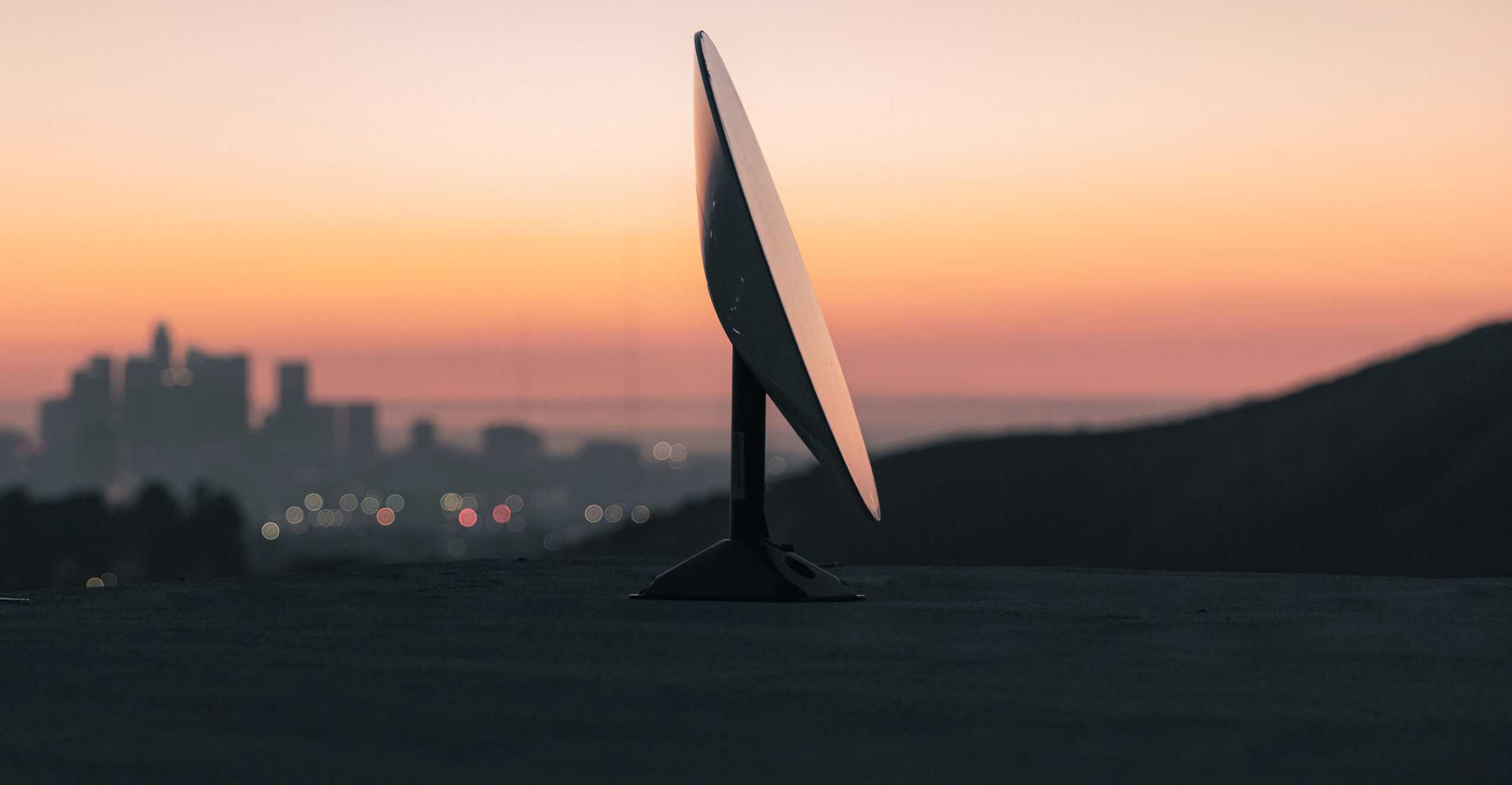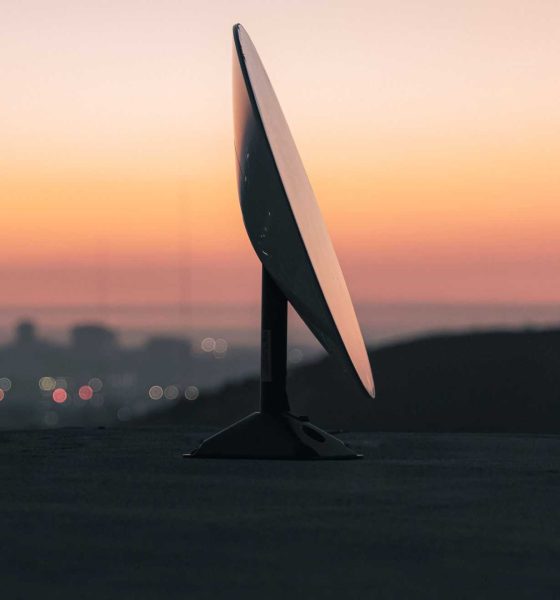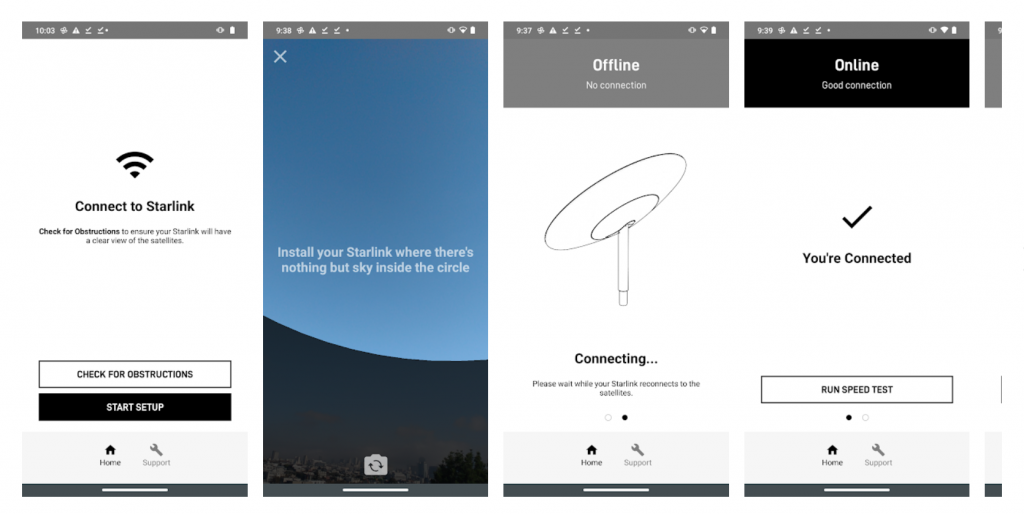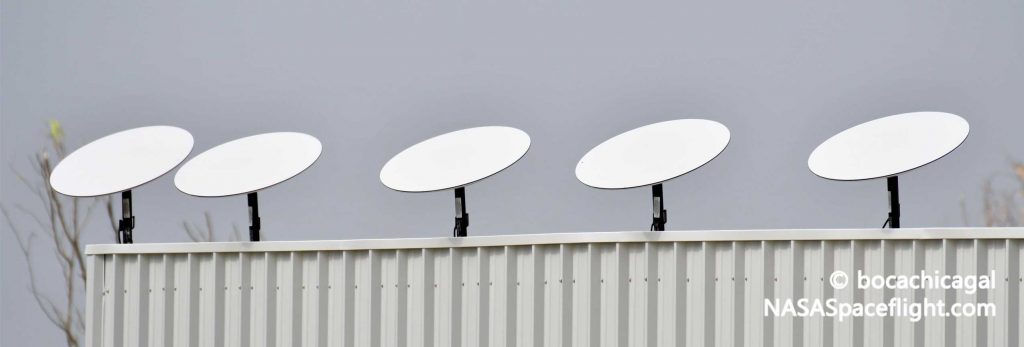

News
SpaceX rolls out Starlink “Better Than Nothing Beta” in the US and Canada
SpaceX has officially begun rolling out what it’s deemed a Starlink internet “Better Than Nothing Beta” across the United States and Canada.
The culmination of a mere 11 months of dedicated Starlink launches, SpaceX says that the constellation – some 820 satellites strong – is now large and mature enough to begin covering all of Canada and the US in 2020, “rapidly expanding to near global coverage of the populated world by 2021.”
While global coverage is thus close on the horizon, SpaceX is striving to make it abundantly clear to early Starlink beta customers that the constellation is in a state of extreme change and instability and will be far from perfect: literally Better Than Nothing, for the time being.
Alongside the first beta invite emails from Starlink, the SpaceX division appears to have made both iOS and Android apps available on their respective app stores. The apps feature a minimalist design leaving plenty of room for expansion and mainly exist to help onboard customers and guide them through the relatively simple setup process.
Starlink is designed to deliver high-speed broadband internet to locations where access has been unreliable, expensive, or completely unavailable. Under Starlink’s Better Than Nothing Beta program, initial service is targeted for the U.S. and Canada in 2020, rapidly expanding to near-global coverage of the populated world by 2021.
The Starlink app is designed to help you:
• Identify the install location that will ensure the best quality of service
• Check for obstructions that can interfere with service
• Setup your Starlink hardware
• Verify your WiFi connection
• Run speed tests
• Troubleshoot connectivity issues
• Contact support
Starlink App description – Android/iOS

The Starlink beta invite also informs early users that they should expect to receive speeds of 50-150 Mbps and latency (ping) between 20 and 40 milliseconds with occasional service outages and connection interruptions. Curiously, the invite also flies counter to previous hints in the code of SpaceX’s Starlink.com website that beta testing would be free for testers, revealing that Better Than Nothing Beta service will cost $99 per month and require each user to purchase a $499 Starlink user terminal.
While undeniably steep as far as most consumers of normal US and Canadian internet services are concerned, the sheer quantity of social media users revealing the obscene prices they pay for mediocre internet across North America suggests that even Starlink’s high beta pricing can compete with – or obliterate – existing rural providers.

A step further, SpaceX’s Hawthorne, CA Starlink user terminal factory has just barely begun volume production, all but guaranteeing that the efficiencies possible through economies of scale have yet to be realized. Phased-array antennas have never been mass-produced at the scale Starlink will need to serve even a minuscule percentage of prospective customers, meaning that SpaceX is likely to learn a great deal as it attempts to be the first company to do so.
If one assumes that SpaceX can quickly cut the cost of service and user terminals in half while dramatically improving network performance, Starlink will quickly become a no-brainer in many developed broadband markets.
SpaceX appears to be shipping Starlink user terminals and setup packages to beta users almost immediately after orders are placed. Lacking any kind of obvious non-disclosure agreement (NDA), it appears that the first reviews from Starlink beta users are likely to begin rolling in a matter of days from now.

News
Tesla FSD fleet is nearing 7 billion total miles, including 2.5 billion city miles
As can be seen on Tesla’s official FSD webpage, vehicles equipped with the system have now navigated over 6.99 billion miles.

Tesla’s Full Self-Driving (Supervised) fleet is closing in on almost 7 billion total miles driven, as per data posted by the company on its official FSD webpage.
These figures hint at the massive scale of data fueling Tesla’s rapid FSD improvements, which have been quite notable as of late.
FSD mileage milestones
As can be seen on Tesla’s official FSD webpage, vehicles equipped with the system have now navigated over 6.99 billion miles. Tesla owner and avid FSD tester Whole Mars Catalog also shared a screenshot indicating that from the nearly 7 billion miles traveled by the FSD fleet, more than 2.5 billion miles were driven inside cities.
City miles are particularly valuable for complex urban scenarios like unprotected turns, pedestrian interactions, and traffic lights. This is also the difference-maker for FSD, as only complex solutions, such as Waymo’s self-driving taxis, operate similarly on inner-city streets. And even then, incidents such as the San Francisco blackouts have proven challenging for sensor-rich vehicles like Waymos.
Tesla’s data edge
Tesla has a number of advantages in the autonomous vehicle sector, one of which is the size of its fleet and the number of vehicles training FSD on real-world roads. Tesla’s nearly 7 billion FSD miles then allow the company to roll out updates that make its vehicles behave like they are being driven by experienced drivers, even if they are operating on their own.
So notable are Tesla’s improvements to FSD that NVIDIA Director of Robotics Jim Fan, after experiencing FSD v14, noted that the system is the first AI that passes what he described as a “Physical Turing Test.”
“Despite knowing exactly how robot learning works, I still find it magical watching the steering wheel turn by itself. First it feels surreal, next it becomes routine. Then, like the smartphone, taking it away actively hurts. This is how humanity gets rewired and glued to god-like technologies,” Fan wrote in a post on X.
News
Tesla starts showing how FSD will change lives in Europe
Local officials tested the system on narrow country roads and were impressed by FSD’s smooth, human-like driving, with some calling the service a game-changer for everyday life in areas that are far from urban centers.

Tesla has launched Europe’s first public shuttle service using Full Self-Driving (Supervised) in the rural Eifelkreis Bitburg-Prüm region of Germany, demonstrating how the technology can restore independence and mobility for people who struggle with limited transport options.
Local officials tested the system on narrow country roads and were impressed by FSD’s smooth, human-like driving, with some calling the service a game-changer for everyday life in areas that are far from urban centers.
Officials see real impact on rural residents
Arzfeld Mayor Johannes Kuhl and District Administrator Andreas Kruppert personally tested the Tesla shuttle service. This allowed them to see just how well FSD navigated winding lanes and rural roads confidently. Kruppert said, “Autonomous driving sounds like science fiction to many, but we simply see here that it works totally well in rural regions too.” Kuhl, for his part, also noted that FSD “feels like a very experienced driver.”
The pilot complements the area’s “Citizen Bus” program, which provides on-demand rides for elderly residents who can no longer drive themselves. Tesla Europe shared a video of a demonstration of the service, highlighting how FSD gives people their freedom back, even in places where public transport is not as prevalent.
What the Ministry for Economic Affairs and Transport says
Rhineland-Palatinate’s Minister Daniela Schmitt supported the project, praising the collaboration that made this “first of its kind in Europe” possible. As per the ministry, the rural rollout for the service shows FSD’s potential beyond major cities, and it delivers tangible benefits like grocery runs, doctor visits, and social connections for isolated residents.
“Reliable and flexible mobility is especially vital in rural areas. With the launch of a shuttle service using self-driving vehicles (FSD supervised) by Tesla in the Eifelkreis Bitburg-Prüm, an innovative pilot project is now getting underway that complements local community bus services. It is the first project of its kind in Europe.
“The result is a real gain for rural mobility: greater accessibility, more flexibility and tangible benefits for everyday life. A strong signal for innovation, cooperation and future-oriented mobility beyond urban centers,” the ministry wrote in a LinkedIn post.
News
Tesla China quietly posts Robotaxi-related job listing
Tesla China is currently seeking a Low Voltage Electrical Engineer to work on circuit board design for the company’s autonomous vehicles.

Tesla has posted a new job listing in Shanghai explicitly tied to its Robotaxi program, fueling speculation that the company is preparing to launch its dedicated autonomous ride-hailing service in China.
As noted in the listing, Tesla China is currently seeking a Low Voltage Electrical Engineer to work on circuit board design for the company’s autonomous vehicles.
Robotaxi-specific role
The listing, which was shared on social media platform X by industry watcher @tslaming, suggested that Tesla China is looking to fill the role urgently. The job listing itself specifically mentions that the person hired for the role will be working on the Low Voltage Hardware team, which would design the circuit boards that would serve as the nervous system of the Robotaxi.
Key tasks for the role, as indicated in the job listing, include collaboration with PCB layout, firmware, mechanical, program management, and validation teams, among other responsibilities. The role is based in Shanghai.
China Robotaxi launch
China represents a massive potential market for robotaxis, with its dense urban centers and supportive policies in select cities. Tesla has limited permission to roll out FSD in the country, though despite this, its vehicles have been hailed as among the best in the market when it comes to autonomous features. So far, at least, it appears that China supports Tesla’s FSD and Robotaxi rollout.
This was hinted at in November, when Tesla brought the Cybercab to the 8th China International Import Expo (CIIE) in Shanghai, marking the first time that the autonomous two-seater was brought to the Asia-Pacific region. The vehicle, despite not having a release date in China, received a significant amount of interest among the event’s attendees.








